Armed with one of the most painful stings on the planet, tarantula hawks are a spider's worst nightmare.
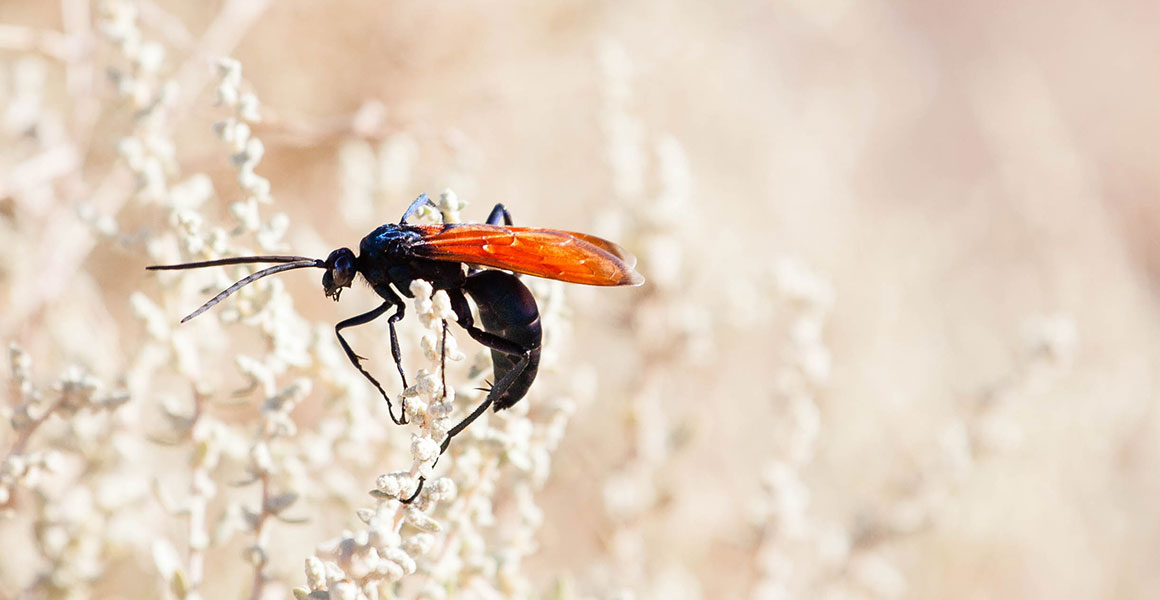
Tarantula hawk wasps deliver one of the most painful stings of any insect. Some have bright orange wings that serve as a warning to would-be predators. © Ian Norman (CC BY-SA 2.0) via Wikimedia Commons
A fear of insects - entomophobia -is relatively common among people, but for some spiders, stings really can be a matter of life or death. One wasp in particular makes even the biggest, hairiest spider run away in terror: the tarantula hawk.
Dr Gavin Broad, wasp expert at the Museum, uncovers the eccentricities of this small but sinister creature.
What is a tarantula hawk?
Despite their name, tarantula hawks (Pepsis genus) are actually a species of spider wasp.
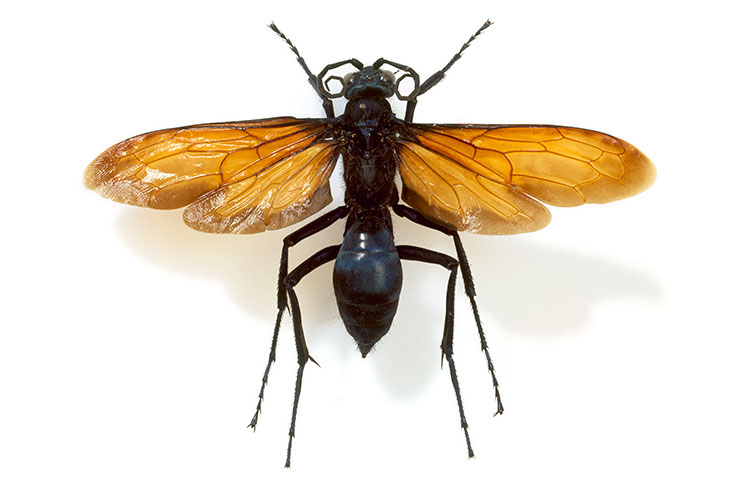
You can see the largest species of tarantula hawk wasp, Pepsis heros, at the Museum. It's on diplay in Hintze Hall.
Tarantula hawks can reach up to 11 centimetres long. There are 133 known species and they all lead solitary lives.
They are named after their habit of hunting tarantulas, which are often considerably larger than themselves - but these wasps do so with little risk to their own lives.
'The wasps always win. I don't think anyone has ever seen a tarantula kill the wasp,' says Gavin.
'The spiders will usually try to flee or avoid them at all costs.'
Are there spider wasps in Britain?
Frozen dinners
Adult tarantula hawks get their nutrition from nectar, but only the females will battle spiders to provide food for their offspring.
They pierce the tarantula with a sharp, curved sting, rapidly injecting venom that permanently paralyses but keeps its hairy adversary alive.
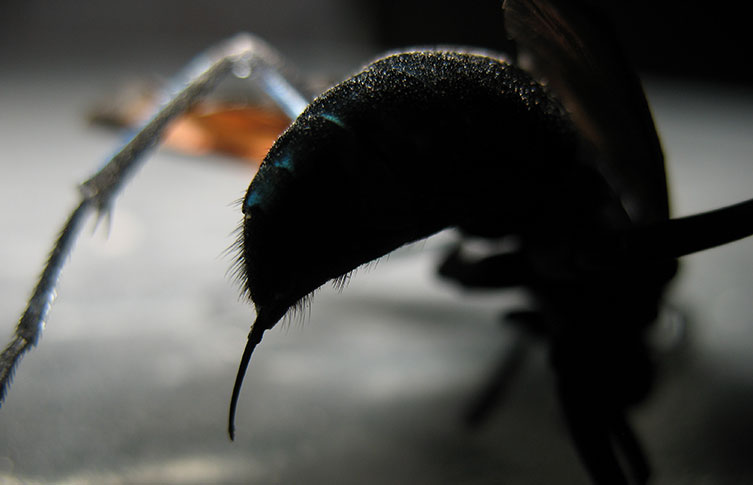
A female tarantula hawk's sting can be up to seven millimetres long © Rankin1958 (CC BY-SA 3.0) via Wikimedia Commons
The incapacitated spider is either held captive in its own burrow or dragged to the wasp's nest. The female then lays a single egg on the spider's body.
The purpose of this act: a pre-prepared dinner.
When the egg hatches, the larva burrows its way inside the spider's abdomen and begins feasting on the still-living tarantula.
It begins by feeding on haemolymph - the spider equivalent of blood - before gorging itself on the tissue.
Eventually the offspring emerges from the spider as an adult tarantula hawk.
Gavin explains, 'The spider has got no chance. Even if you took the larva away, it wouldn't recover.'
'It would remain in a state of suspended animation for quite a while, until eventually its respiration would stop.'
Only the wasps' larvae are carnivores. When tarantula hawks reach adulthood, they feed on pollen instead.
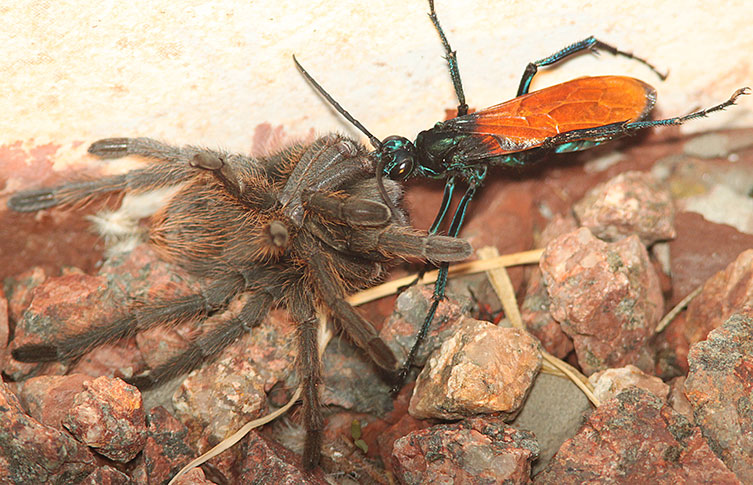
Once it has stung, the wasp drags the paralysed tarantula back to its nest to be a host for its larva. Image: Alan Schmierer (CC0 1.0) via Wikimedia Commons
How bad is a tarantula hawk sting?
For humans and other vertebrates, the tarantula hawk has one of the most painful stings on the planet.
American entomologist Justin Schmidt created the Pain Scale for Stinging Insects, with the help of variably willing or unwitting test subjects. He once described the tarantula hawk's sting as 'instantaneous, electrifying and totally debilitating'.
The tarantula hawk has been awarded second place on the Schmidt sting pain index, beaten only by the South American bullet ant, Paraponera clavata.
The pain from a bullet ant sting lasts up to 24 hours, whereas that of the tarantula hawk wasp usually only aggravates the unlucky victim for five minutes.
Schmidt has also in the past suggested that when stung, the only response is to 'lay down and scream'.
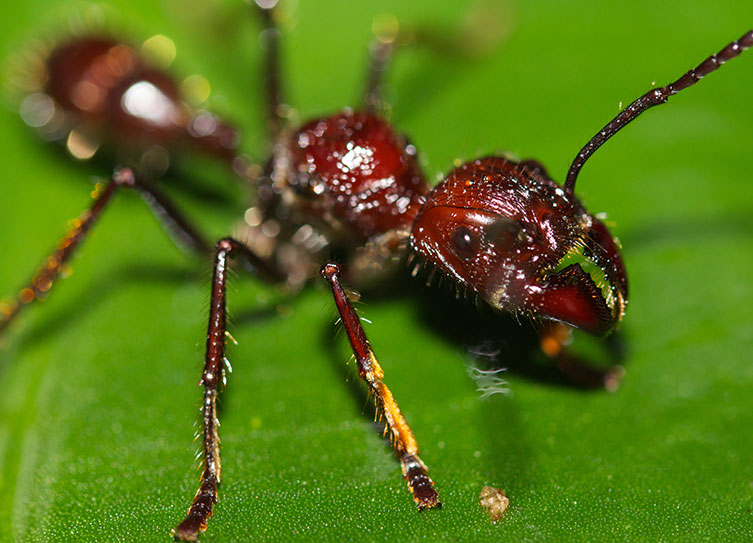
The bullet ant is the only insect with a more painful sting than tarantula hawks © Graham Wise (CC BY 2.0) via Wikimedia Commons
'In Schmidt's ranking of one to four, he tries to be objective, so each category is quite broad,' says Gavin. 'Number two is broadly comparable to a honey bee.'
The tarantula hawk earned a top score of four, making its sting almost unbearably painful. It's considered about as painful as the warrior wasp's sting, and slightly more painful than that of a velvet ant.
Are tarantula hawks dangerous?
Tarantula hawks are fairly docile unless provoked, although the threat of debilitating pain appears to have left this insect mostly unchallenged, with no known predators.
Some species have wings in an intense shade of bright orange, a typical danger sign to would-be predators. This is known as an aposematic signal.
Stinging is the wasp's main defence. These insects also have a hard, smooth exoskeleton and legs covered in sharp spines that act as defensive armour, protecting the wasp long enough to inject its venom.
While spiders are left paralysed by the venom, for vertebrates (such as humans) it causes extreme pain. It is a distraction big enough to give the wasp a chance to get away to safety.
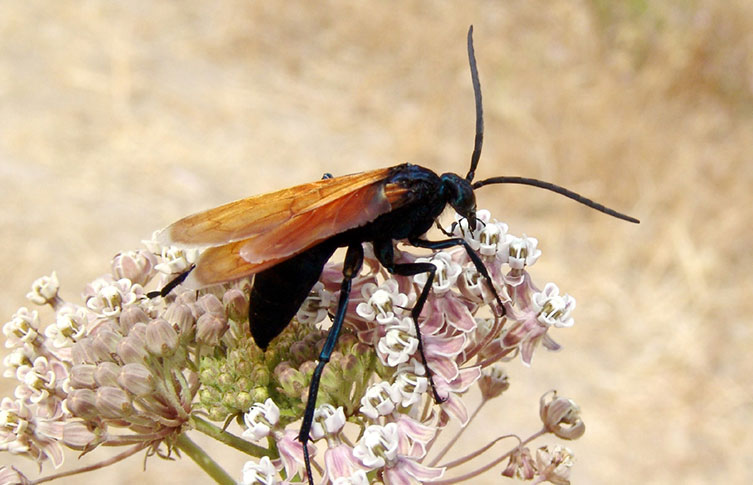
Adult tarantula hawks are pollen feeders. Only their offspring are carnivores. Image: Public Domain
Where do tarantula hawks live?
Tarantula hawks are found across South and Central America and in the southern United States.
The largest species of tarantula hawk is Pepsis heros, which can reach up to 11 centimetres long.
You can see a specimen of this large wasp from southeastern Peru at the Museum. It is in a display of swarming insects in Hintze Hall.
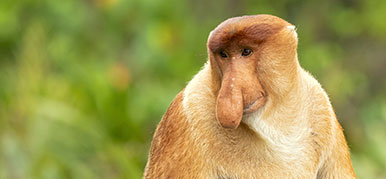
What on Earth?
Just how weird can the natural world be?
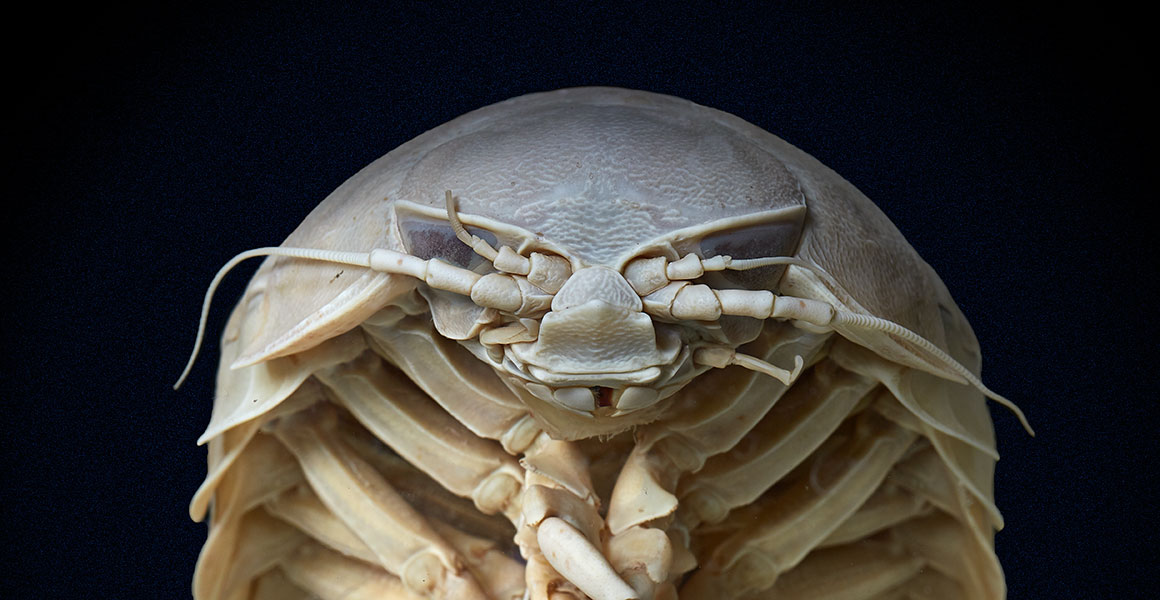
Ever wondered if an isopod could eat strawberries?
We haven't either. But you could find out in one of our new online courses, designed for all levels of interest in the natural world.
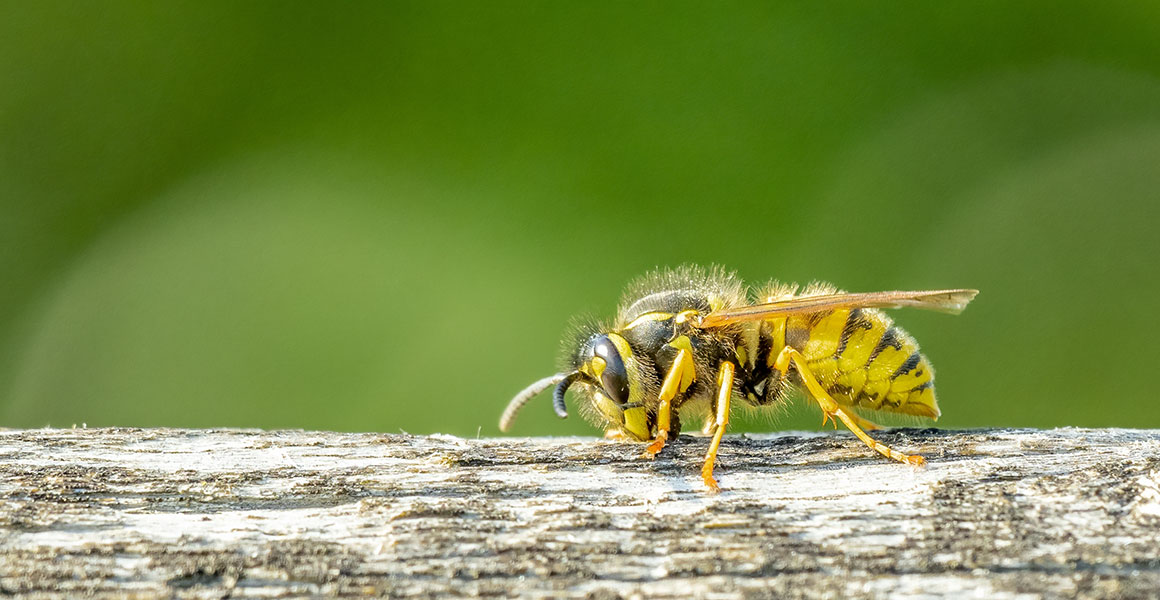
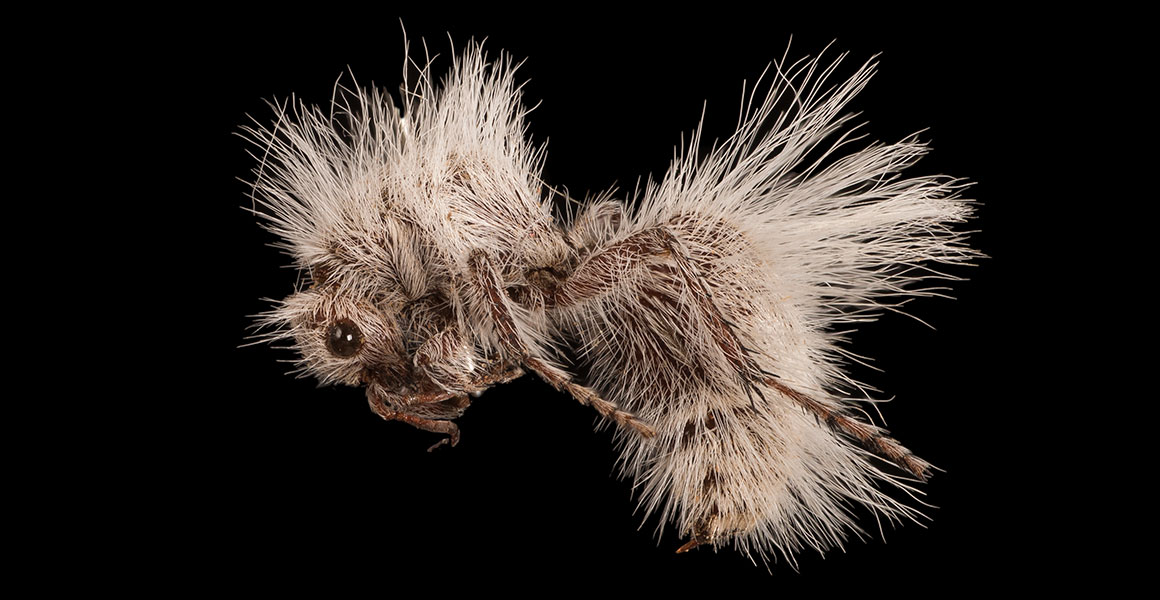
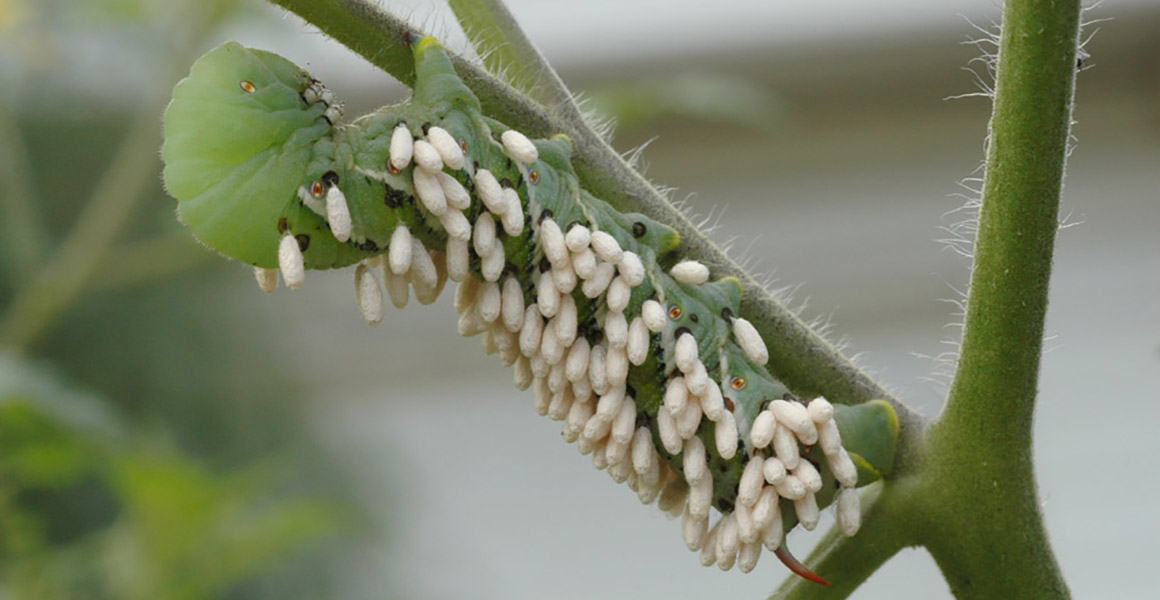
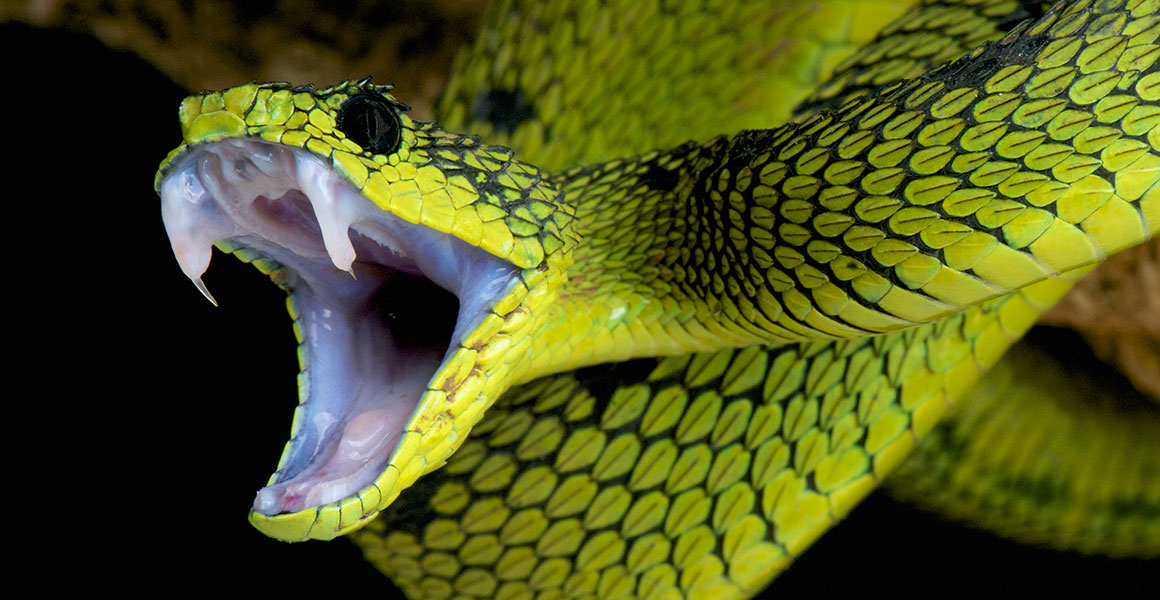
Don't miss a thing
Receive email updates about our news, science, exhibitions, events, products, services and fundraising activities. We may occasionally include third-party content from our corporate partners and other museums. We will not share your personal details with these third parties. You must be over the age of 13. Privacy notice.
Follow us on social media